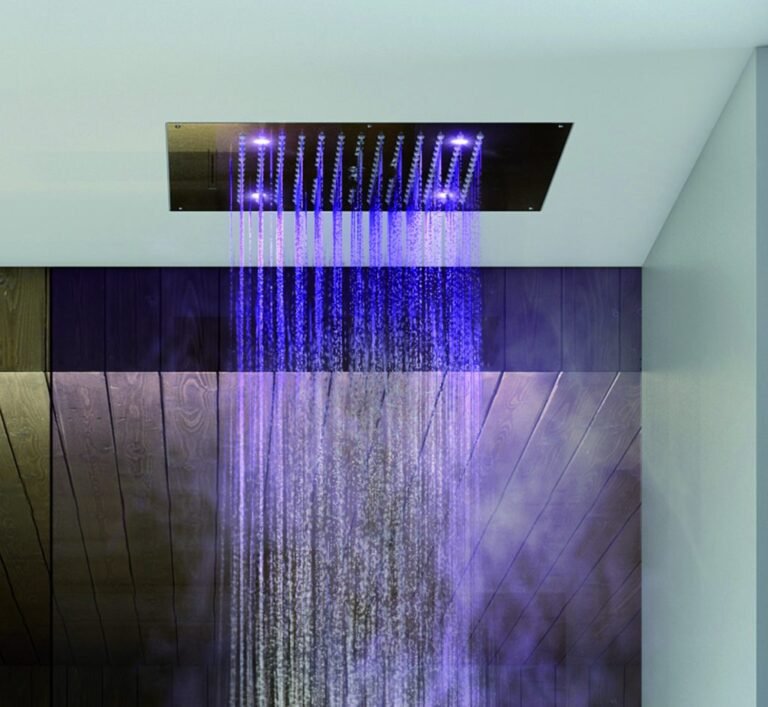Shower Safety Tips For Seniors And People With Disabilities
As we age or face physical limitations, simple tasks like taking a shower can become more challenging and even hazardous. Slippery surfaces, difficulty balancing, and reduced mobility can increase the risk of accidents and injuries in the bathroom. However, with proper precautions and modifications, seniors and people with disabilities can enjoy a safe and comfortable showering experience. In this article, we’ll explore some essential shower safety tips tailored specifically for these individuals.
To Know More About it Please Click Here
Install Grab Bars
Installing grab bars in strategic locations within the shower area can provide much-needed support and stability. These bars should be securely anchored to the wall and positioned at different heights to accommodate varying needs. Seniors and individuals with disabilities can use them for balance while entering and exiting the shower, as well as for support while standing or maneuvering inside.
Use Non-Slip Mats or Adhesive Strips
Slippery surfaces are a significant hazard in the bathroom, especially when water is present. To reduce the risk of falls, place non-slip mats or adhesive strips on the shower floor and bathtub surface. These products provide traction and help prevent slips and falls, providing added safety during showering.
Consider a Shower Chair or Bench
For individuals with mobility issues or fatigue, a shower chair or bench can offer a secure and comfortable place to sit while bathing. These devices come in various designs, including wall-mounted fold-down seats and freestanding benches. Using a shower chair allows users to shower independently while minimizing the risk of falls and conserving energy.
Adjust Water Temperature
Seniors and individuals with sensory impairments may have difficulty gauging water temperature, increasing the risk of scalds or burns. Installing a thermostatic mixing valve or setting the water heater to a lower temperature can help maintain a safe and consistent water temperature. Caregivers should also test the water temperature before assisting others with bathing to prevent accidental burns.
Ensure Adequate Lighting
Proper lighting is essential for maintaining a safe environment in the bathroom, especially for individuals with visual impairments. Install bright, evenly distributed lighting fixtures in the shower area to enhance visibility and reduce the risk of accidents. Consider adding nightlights or motion-activated lights to illuminate the path to the bathroom during nighttime.
Keep Essential Items Within Reach
Arrange shower essentials such as shampoo, soap, and towels within easy reach to minimize unnecessary movements and reaching. Use shower caddies, wall-mounted dispensers, or accessible shelves to organize and store these items within arm’s reach. This simple adjustment promotes independence and reduces the risk of falls associated with bending or stretching.
Install Handheld Showerheads
Handheld showerheads offer greater flexibility and control during bathing, making them an excellent choice for seniors and individuals with disabilities. The adjustable height and angle allow users to direct the water flow precisely where needed, reducing the need for strenuous movements. Additionally, handheld showerheads make it easier to rinse off while seated on a shower chair or bench.
Clear Clutter and Obstacles
Keep the shower area free of clutter and unnecessary obstacles to create a safe and accessible environment. Remove items such as bathmats, toiletries, or laundry baskets that can obstruct movement and pose tripping hazards. Encourage good organization habits and regular bathroom maintenance to ensure a clear, hazard-free shower space.
To sum up, to preserve their independence and general well-being, seniors and people with disabilities must prioritize shower safety. By implementing these practical tips and making necessary modifications, caregivers and individuals alike can create a secure and comfortable showering experience. Remember, a few simple adjustments can go a long way in preventing accidents and promoting confidence and independence in the bathroom.





